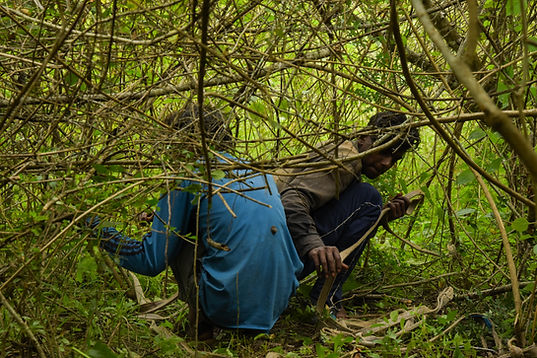
Invasives
Invasive removal
The primary goal of WildCarbon is aiding restoration of the Nilgiri Biosphere Reserve, which starts with methodical, ecologically sensitive removal of Lantana camara and Senna spectabilis.
Infestation levels have reached critical levels across the five parks of the NBR.
Our Stories From The Ground reveals the everyday challenges of tackling this decades old problem.

.png)
Lantana camara
According to a recent study by the IPBES, Lantana is the second most invasive flora globally, with the Indian subcontinent particularly affected.
Studies conducted by The Shola Trust, ATREE, NCBS and WWF have documented the widespread encroachment of invasive flora, suppression of native flora, and their role in exacerbating fire risk. At present, over 35% of the NBR is covered by the invasive Lantana camara, a wild shrub.
Lantana is a highly successful invasive plant due to its toxicity to animals, which prevents it from being consumed. Lantana is also allelopathic, suppressing the growth of nearby native plants. The plant's ability to produce thousands of seeds, which birds then disperse, and its resilience to fire further contribute to its rapid spread.
.png)
Senna spectabilis
Alongside Lantana, the NBR is currently afflcited by the fast-growing tree Senna spectabilis.
Senna spectabilis: Senna is a fast-growing, deciduous tree or shrub that can reach heights of 7 to 15 metres. It is unmistakable thanks to its bright yellow flowers that bloom in large clusters. Senna is now considered an invasive species in many parts of the world, particularly in Africa and Southeast Asia.
Its rapid growth and adaptability allow it to outcompete and displace native vegetation, posing a significant threat to local flora. As with Lantana, the dense growth of Senna reduces habitat and forage affecting animal movements and threatening biodiversity.
.png)